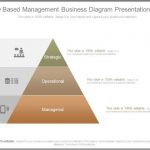Financial Statements Financial Accounting

Check out a quick overview below of the four types of financial statements in accounting. Read on to learn the order of financial statements and which financial statement is prepared first. Learn the importance of the order of financial statements in small business accounting. Various analytical techniques, such as ratio analysis, trend analysis, vertical and horizontal analysis, and DuPont analysis, can be applied to interpret financial statements and evaluate a company’s performance. An adverse opinion means that the financial statements are materially misstated and do not accurately represent the company’s financial position. Auditors play a crucial role in financial statement preparation by providing assurance on the accuracy, reliability, and compliance of financial statements.
How To Keep Track Of Business Expenses (In 5 Easy Steps)

Information from your accounting journal and your general ledger is used in the preparation of your business’s financial statement. The income statement, the statement of retained earnings, the balance sheet, and the statement of cash flows all make up your financial statements. Also, information from the previous statement is used to develop the next https://www.intuit-payroll.org/ one. The last item in the order of financial statements is the cash flow statement, processed last because you use all of your financial data from the other three statements to create the cash flow statement. This statement will show you how cash has changed in your revenue, expense, asset, equity, and liability accounts during this accounting period.
QuickBooks Support
Get up and running with free payroll setup, and enjoy free expert support. Retained earnings refers to the net profit of a company after it makes its dividend and other shareholder payments—earnings which are, therefore, “retained” by the company. A financial professional will offer guidance based on the information provided and offer a no-obligation call to better understand your situation. Our writing and editorial staff are a team of experts holding advanced financial designations and have written for most major financial media publications. Our work has been directly cited by organizations including Entrepreneur, Business Insider, Investopedia, Forbes, CNBC, and many others. Our goal is to deliver the most understandable and comprehensive explanations of financial topics using simple writing complemented by helpful graphics and animation videos.
Do you own a business?
11 Financial is a registered investment adviser located in Lufkin, Texas. 11 Financial may only transact business in those states in which it is registered, or qualifies for an exemption or exclusion from registration requirements. 11 Financial’s website is limited to the dissemination of general information pertaining to its advisory services, together with access to additional investment-related information, publications, and links. Finance Strategists has an advertising relationship with some of the companies included on this website.

- For example, balance sheets are typically used for asset and liability accounts, while income statements are used for expense accounts.
- Revenues are listed first, and then the company’s expenses are listed and subtracted.
- Expense accounts allow you to keep track of money that you no longer have.
- This information is reported on the statement of stockholder’s equity for corporations or the statement of partner’s equity for partnerships.
A purchase or sale of an asset, loans made to vendors or received from customers, or any payments related to a merger or acquisition are included in this category. Now, you can’t go off creating your different financial statements all willy nilly. Finally, ethical considerations such as integrity, objectivity, confidentiality, professional competence, and due diligence must be taken into account to ensure accurate financial statement preparation. Audit opinions are the conclusions auditors reach after reviewing a company’s financial statements.

The balance sheet is sometimes called the statement of financial position since it shows the values of the entity’s net worth. You can find an entity’s net worth by removing liabilities from total assets. Profit and cash generation are two different things, that’s why companies also need a statement to illustrate any changes in the cash balances during a given period. The Cash Flow Statement compiles cash and cash equivalents that have been generated (cash inflows) and spent (cash outflows) within a fiscal period. Based on the specific business activities for which a firm pays or receives cash, the Cash Flow Statement consists of three major sections—these are operating activities, investing activities, and financial activities. One of the main duties of a bookkeeper is to keep track of the full accounting cycle from start to finish.
Expenses are operational costs that occur in the entity for a specific accounting period. They rank from operating expenses like salary expenses, utilities, depreciation, transportation, and training expenses to tax expenses and interest expenses. All revenues and expenses that stem from the normal https://www.accountingcoaching.online/amortized-cost-vs-amortization/ course of business operations are recorded in this statement. The bottom line of the Income Statement is the Net Income for the period. A positive Net Income indicates a profit, while a negative number represents a loss. These examples should answer the question, “what is a financial statement?
Arjun has since written for investment firms, consultants, and SaaS brands in the Accounting and Finance space. Balances of fixed asset accounts like land, current asset accounts like cash, and intangible asset accounts like goodwill appear here. You may need to post adjusting entries illinois income tax brackets 2023 before you start closing your accounts. Adjusting entries are generally for unrecognized income or expenses for the period. I got a university degree to learn how financial statements work and how those numbers come together to give you a comprehensive financial picture.
For-profit primary financial statements include the balance sheet, income statement, statement of cash flow, and statement of changes in equity. Nonprofit entities use a similar but different set of financial statements. The financial statements are used by investors, market analysts, and creditors to evaluate a company’s financial health and earnings potential. The three major financial statement reports are the balance sheet, income statement, and statement of cash flows.
Your statement of retained earnings, or statement of owner’s equity, lists what your business’s retained earnings are at the end of an accounting period. Retained earnings are profits you can use to pay off liabilities or make investments. You can even use your cash flow statements to create a cash flow forecast or projection.
After the accounts have been adjusted and closed, the financial statements are compiled. There is a logical order to preparing the financial statements because they build on one another. Financial statements are summary-level documents that provide details about a company’s financial position at a given point in time. Typically a balance sheet, cash-flow statement, and income or profit and loss statement are included. The first step in financial statement preparation is identifying and gathering relevant financial data from a company’s accounting records. This process involves collecting information on transactions, such as sales, expenses, investments, and borrowings, and organizing it in a systematic manner.
The balance sheet is the financial statement that tracks the firm’s financial position at a given point in time, typically the last day of the accounting cycle. It’s a statement showing what your business owns (assets) and what it owes (liabilities). Your assets must equal your liabilities plus your equity or owner’s investment. The balance sheet shows your firm’s financial position with regard to assets and liabilities/equity at a set point in time. A financial statement is typically a formal document or report that summarizes the financial activities, performance, and position of a company or organization.
These principles provide a framework for financial statement preparation and ensure that financial statements are consistent, reliable, and comparable. The balance sheet, also known as the statement of financial position, presents a company’s assets, liabilities, and stockholders’ equity at a specific point in time. Proper financial statement preparation requires a thorough understanding of accounting principles, standards, and regulations, as well as attention to detail and accuracy in recording and reporting financial data. Review Centerfield’s statement of cash flows for the accounting period ended December 31. Note that the ending cash balance ($40,000) equals the cash balance in the balance sheet. Sales, cost of goods sold (COGS), gross profit, and operating expenses are all inputs for the income statement.
So is operating income, which you generate from day-to-day business activities. Non-operating income is inconsistent and unpredictable, so you can’t rely on it to produce annual profits. Your business must produce a majority of its net income from operating income activities because operating income is sustainable. An income statement shows a company’s revenue and expenses for a period of time. It provides information relating to returns on investments, risks, financial flexibility, and operation capabilities. The Statement of Comprehensive Income, commonly known as the Profit and Loss Account, tells you whether an organization generates a profit or a loss for a period of time.






